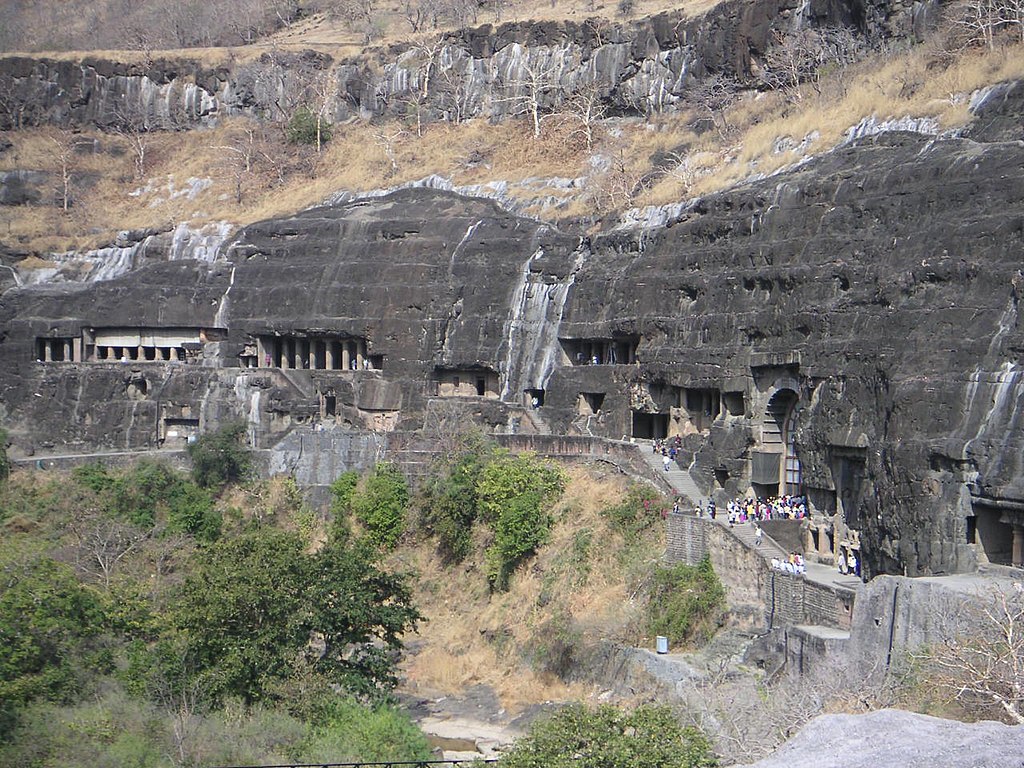Ajanta, a UNESCO World Heritage site in Maharashtra, India, is a testament to the artistic brilliance of ancient Indian civilization. Nestled in a horseshoe-shaped gorge along the Waghora River, the Ajanta Caves are renowned for their exquisite rock-cut Buddhist cave temples, showcasing a remarkable fusion of art, religion, and architecture.

Dating back to the 2nd century BCE to the 6th century CE, the Ajanta Caves represent a span of several centuries during which Buddhist monks meticulously carved and painted the rock surfaces to create elaborate cave complexes. The caves were hidden from the world for centuries, tucked away in the dense forests until accidentally rediscovered by a British officer in 1819.
The complex comprises 29 caves, each serving a distinct purpose ranging from monasteries to prayer halls. The caves are classified into two distinct phases: the earlier Hinayana phase, representing simpler forms of Buddhism, and the later Mahayana phase, characterized by the grandeur of larger-than-life sculptures and intricate paintings.
The hallmark of Ajanta’s artistic treasures is its frescoes and murals. These paintings, executed with natural pigments, depict scenes from the life of Buddha, Jataka tales, and various mythological stories. The vibrant colors and attention to detail reveal the mastery of the artists who brought these caves to life. The paintings not only serve as a visual chronicle of ancient Indian life but also provide insights into the spiritual and philosophical foundations of Buddhism.
Cave 1, also known as the Viharas, is an excellent example of the Hinayana phase. It comprises a pillared veranda, a hall for congregational worship, and smaller cells for individual meditation. The simple yet elegant design emphasizes the ascetic nature of early Buddhism.
Cave 2, believed to be a royal chapel, is adorned with intricate carvings and features a large stupa at its center. The sculpted figures and ornate embellishments reflect the transition from the earlier phase to the more elaborate Mahayana traditions.
Cave 16, known as the Kailasanatha temple, is a breathtaking marvel of architecture and art. This cave is unique as it is a free-standing monolith, carved from top to bottom to resemble Mount Kailash, the abode of Lord Shiva. The sheer scale and intricate detailing make it one of the most remarkable achievements in rock-cut architecture.
One of the notable aspects of Ajanta is its amalgamation of various architectural styles. The caves exhibit influences from different periods, regions, and even foreign cultures. The intricately carved facades, pillared halls, and expressive sculptures reveal the artisans’ adaptability and creative genius.
Ajanta’s cultural significance extends beyond its artistic marvels. The caves provide valuable insights into the religious, social, and economic aspects of ancient India. The communal spaces, living quarters, and prayer halls offer a glimpse into the daily lives of the monks and pilgrims who once inhabited these caves.
Preservation efforts and restoration work have been ongoing to safeguard Ajanta’s delicate artworks from natural elements and the passage of time. The Archaeological Survey of India, in collaboration with international organizations, has played a crucial role in ensuring the site’s longevity and accessibility to future generations.
The Ajanta Caves stand as an unparalleled testament to the artistic achievements of ancient India. The melding of spiritual devotion with artistic finesse has left an indelible mark on the world’s cultural heritage. As visitors explore the dimly lit caves adorned with centuries-old paintings, they are transported back in time, immersed in the profound beauty and wisdom encapsulated within the rock-hewn walls of Ajanta. It remains a sanctuary of art, a sacred space where the echoes of an ancient civilization reverberate through the ages.



